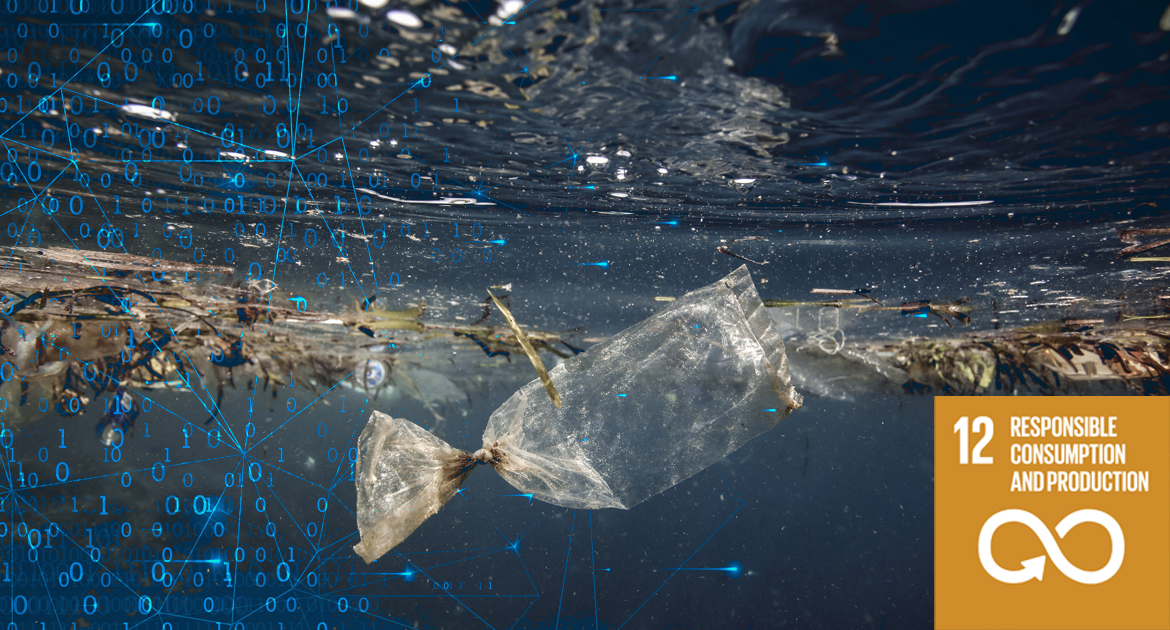Trusting your data, telling stories about your success and knowing that every act, no matter how small, can help win the fight against waste was some of the advice shared by Queen of Raw and Topolytics, two gamechangers in waste management at the recent SAP Sustainability Summit panel discussion about orchestrating ecosystem innovation for impact.
“Zero waste can only be achieved with the help of data,” said Michael Groves, Founder and CEO of Topolytics, a data analytics business for waste managers. “Data shows public and private players exactly what is happening to their waste and will help them build better intervention options and create closed loops for recovery.”
Groves was one of the people on the boat hosting the Ocean Plastics Leadership Summit (OPLS) in 2019, a research expedition to better understand the scope of plastic pollution and to develop cross-industry solutions and partnerships to solve this global challenge over the next decade.
Seeing is believing
Whenever the ship approached clumps of sargassum seaweed, the participants would stop their meetings and jump into zodiac boats with their snorkeling gear. But they didn’t see any fish. And at first, they didn’t see much plastic either. That’s because it’s often not visible. Plastic in the ocean breaks down into small particles that are caught in seaweed and ingested by marine creatures.
“What you don’t see is the real problem,” says Groves, winner of the Circular Economy 2030 challenge sponsored by SAP and Google that year. A geographer who was appalled by the amount of plastic he encountered in South East Asia long before people began talking about the crisis, Groves believes waste is still not getting the attention it desperately needs.
While we may not actually see the damage, the data is irrefutable. An alarming 60 percent of waste produced in cities around the world gets dumped or leaked into the environment, and an equally alarming 61 percent of people globally don’t have access to proper waste management infrastructures. It’s a thorny problem because the waste value chain is very complex and opaque, with many private and public sector players and a significant informal sector around the world. To make matters worse, there is a huge mix of materials, each requiring different methods of recovery and recycling.
Realizing that money follows data, Groves developed a solution that uses analytics and machine learning to follow trash as it travels. Clear data and insights are fundamental to spurring investments in new infrastructure and innovation in the sector. With useful data available about what waste is where and in what quantity and quality, companies can then procure this waste much more effectively and bring the materials back into their production processes through platforms like SAP Ariba software.
Debunking myths
“Many companies think they know what’s going on with their waste, but they are usually surprised by the truth,” he says. “There is huge potential to unlock economic and social value that is currently just draining away!”
One person helping fashion retailers stop the drain is Stephanie Benedetto, co-Founder of Queen of Raw, a marketplace to buy and sell unused textiles, from organic cotton to some of the highest quality luxury deadstock fabrics that would otherwise be burned or buried.
Benedetto was inspired by her childhood experiences growing up in an immigrant family in the Garment District of New York. Her grandfather would collect unused clothes from the neighborhood and repurpose them into beautiful, fashionable items for local sale. It was a profitable, sustainable business that inspired her when she later became a corporate attorney on Wall Street, specializing in technology and sustainability. When the crash came in 2008, she decided to start her own company.
When Benedetto first started talking to brands and retailers about sustainability years ago, it was seen as nice to have. People responsible for sustainability were new in the position, and they did not have big budgets. Her first big challenge was debunking the myth that sustainability has to cost a lot of money.
She realized that retailers became paralyzed when faced with objectives such as becoming 100 percent sustainable by 2030. “You wouldn’t know where to start on day one if you heard that. It’s too much, too fast,” she says. “We go to the retailers and help them pinpoint the valuable waste in their supply chain. We look at their unused inventory and their deadstock. We help them sell it on the marketplace, and we provide tools to minimize waste going forward.”
Once the retailers are making money on their unused inventory, she explains, they can start putting their savings into doing other good work such as paying their workers better wages and using innovative technology and sustainable materials without increasing overall capex expenditure.





